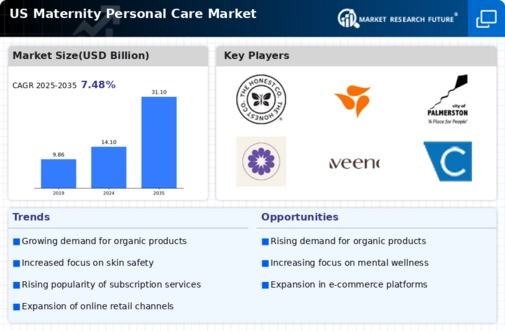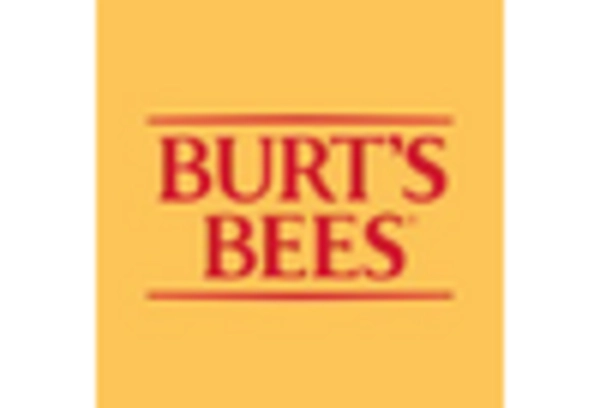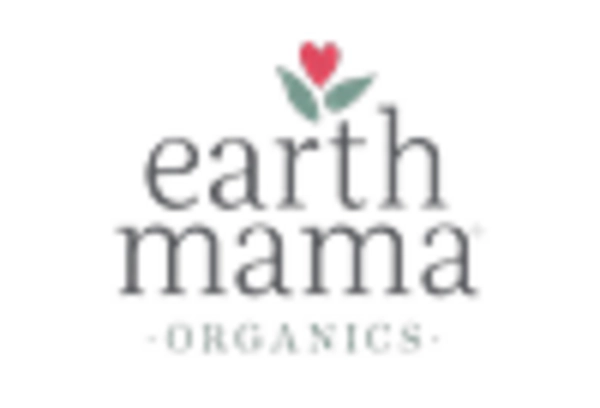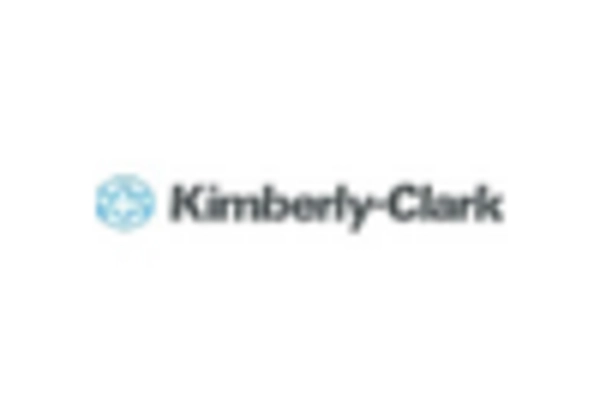The maternity personal-care market is currently characterized by a dynamic competitive landscape, driven by evolving consumer preferences and an increasing focus on health and wellness. Key players such as Procter & Gamble (US), Johnson & Johnson (US), and Burt's Bees (US) are strategically positioned to leverage innovation and sustainability in their product offerings. Procter & Gamble (US) emphasizes its commitment to eco-friendly products, while Johnson & Johnson (US) focuses on expanding its portfolio through targeted acquisitions. Burt's Bees (US), known for its natural ingredients, continues to enhance its brand presence through community engagement and educational initiatives. Collectively, these strategies contribute to a competitive environment that prioritizes consumer trust and product efficacy.
In terms of business tactics, companies are increasingly localizing manufacturing to enhance supply chain efficiency and reduce costs. The market appears moderately fragmented, with several players vying for market share. However, the influence of major companies remains substantial, as they set trends and standards that smaller brands often follow. This competitive structure allows for a diverse range of products, catering to various consumer needs and preferences.
In October 2025, Johnson & Johnson (US) announced a partnership with a leading tech firm to develop a new line of smart personal-care products aimed at expecting mothers. This strategic move is significant as it integrates technology into personal care, potentially enhancing user experience and engagement. By leveraging data analytics, the company aims to provide personalized recommendations, thereby increasing customer loyalty and satisfaction.
In September 2025, Procter & Gamble (US) launched a new initiative focused on sustainable packaging for its maternity personal-care products. This action reflects a growing trend towards environmental responsibility, appealing to eco-conscious consumers. The initiative not only enhances brand image but also aligns with global sustainability goals, positioning the company favorably in a competitive market increasingly driven by consumer values.
In August 2025, Burt's Bees (US) expanded its product line to include a range of organic maternity skincare items, responding to the rising demand for natural and organic products. This expansion is strategically important as it allows the brand to tap into a niche market segment that prioritizes health and safety, particularly among expectant mothers. By reinforcing its commitment to natural ingredients, Burt's Bees (US) strengthens its market position against competitors who may not emphasize such values.
As of November 2025, current trends in the maternity personal-care market indicate a strong shift towards digitalization, sustainability, and the integration of artificial intelligence in product development. Strategic alliances are increasingly shaping the landscape, enabling companies to pool resources and expertise. Looking ahead, competitive differentiation is likely to evolve from traditional price-based competition to a focus on innovation, technology, and supply chain reliability. This shift underscores the importance of adapting to consumer expectations and market demands in a rapidly changing environment.

















Leave a Comment